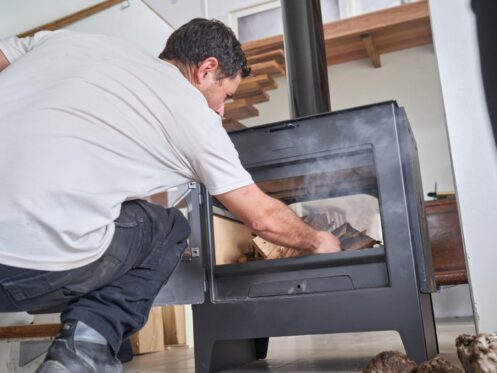If you’re buying your first furnace and getting it installed in your Edison home, there’s probably a mix of excitement and stress. You want reliable heat when the cold months show up, but you might not know what to expect from the installation process. The good news is that with a few smart tips, you can avoid common hiccups and make sure the job gets done right the first time.
Having a properly installed furnace makes a big difference in how your home feels and how much you pay for energy. If the system is set up the wrong way, it can lead to uneven heat, rising utility bills, and extra wear on the unit. First-time buyers might feel like they’re walking into unknown territory, but understanding a few basics of furnace installation can help you feel more confident about your choices.
Understanding the Furnace Installation Process
A new furnace isn’t something you just buy and plug in. There’s a step-by-step process that includes planning, sizing, and professional installation. If this is your first time going through it, knowing what’s involved can ease stress and make the experience smoother.
Furnace installation generally follows these steps:
1. Home Assessment – A technician will inspect your current setup, including the square footage of your home, insulation, and existing ductwork.
2. System Selection – Based on your home’s layout and your heating needs, the right type and size of furnace is chosen. This could be gas, electric, or oil-based.
3. Removal – The old unit, if there is one, gets safely disconnected and removed.
4. New Install – The new furnace is set in place, connected to the existing ducts, power supply, and ventilation.
5. Testing – Once everything is connected, the system gets tested to make sure it heats properly and safely.
If you come across terms like BTU, AFUE rating, or heat exchanger, don’t stress. Here’s a quick rundown of basic furnace lingo:
– BTU: Measures how much heat your furnace can produce. More BTUs means more heat output.
– AFUE Rating: Shows how efficiently the furnace uses fuel. Higher ratings mean better efficiency.
– Heat Exchanger: A component that heats the air before it moves through your home.
Getting help from licensed HVAC technicians is a step you don’t want to skip. Handling gas lines, electrical work, or tight duct spaces isn’t something most homeowners are ready for. A trustworthy pro will make sure everything is done safely and up to local code, giving you peace of mind when the temperatures drop.
Choosing the Right Furnace for Your Edison Home
Picking the right furnace isn’t just about finding a familiar brand. It needs to match your house’s size, your comfort preference, and how much you want to spend on energy. If the system is too large, it’ll keep cycling on and off without evenly heating the home. Too small, and it’ll run constantly without keeping up.
Here’s what to think about when choosing:
– Home Size – Bigger homes generally need more powerful systems. Have a professional calculate the proper size based on your square footage and insulation levels.
– Furnace Type – Options include gas, electric, or oil furnaces. Each has pros and cons in cost, efficiency, and upkeep.
– Energy Efficiency – If you’re interested in long-term savings, focus on high AFUE ratings for better performance and lower operating costs.
– Budget – Be sure to weigh upfront furnace cost against how much it will cost to run. A cheaper system might come with higher energy bills.
Talking with an HVAC expert can save you from making a costly mistake. Take the example of a homeowner in Edison deciding between two gas furnaces. One had a lower upfront cost but wasn’t very efficient. After talking with a technician, it became clear that the slightly more expensive unit would actually cost less over time.
A furnace that fits your home and goals will heat better, last longer, and save you from unnecessary repairs. Taking time to make the right choice now can pay off for years.
Preparing Your Home for Installation
Getting your home ready before the furnace arrives can help avoid delays and make the day go smoothly. Start by making sure there’s a clear path to the installation area. Move any furniture, boxes, or other items that might get in the way. Technicians need enough space to work safely and efficiently.
Next, double-check that the room where the furnace will go meets safety clearance guidelines. This ensures heat can move freely and gives room for future maintenance. A snug space might keep your unit from running well.
Also, check your ventilation and ductwork. If air vents are blocked or dusty, your furnace might need to work harder than it should. Cleaning things out ahead of time means fewer problems once the unit is running.
Here are a few key steps to take:
– Clear the installation area to allow easy access.
– Confirm there’s proper spacing around the furnace.
– Clean air vents and inspect duct paths for blockages.
Being prepared helps your furnace start off on the right foot and gives the installation crew everything they need to do the job right.
The Installation Day: What to Expect
The day of your installation doesn’t have to be stressful when you know what’s coming. Technicians usually begin by taking one last look at your current setup. This final walkthrough helps confirm earlier assessments and ensures the plan is still accurate.
They’ll set the new furnace in place and start connecting it to your power, ducts, and, if applicable, gas or oil lines. Safety is a central part of every step, and the team will run several checks before they wrap up.
A general breakdown of the day looks like this:
1. Final measurements and setup checks.
2. Positioning and placing the furnace in its designated spot.
3. Hooking up power, fuel lines, and ductwork connections.
4. Running a full round of safety and performance tests.
You can help by keeping the area free of obstructions and making sure someone is around to answer questions. Once installed, the technicians will listen for strange sounds, test the thermostat, and inspect everything for faults. Their job isn’t done until the furnace runs safely and smoothly.
Ensuring Efficiency and Longevity
Once your new furnace is warm and working, staying ahead with simple upkeep will keep it in great shape. One easy task with a big impact is changing the air filter every couple of months. A clean filter creates better airflow and reduces strain on the furnace.
Listen for unusual sounds or patterns in the system’s behavior, like frequent cycling on and off. These can be early signs of a problem that needs a technician’s attention.
It’s wise to get an annual tune-up by a certified HVAC technician. Preventive check-ups spot little issues before they lead to big repairs.
To keep your furnace running strong:
– Change air filters regularly to avoid airflow problems.
– Keep an ear out for strange noises or changes in heat output.
– Get yearly inspections from an HVAC pro.
A little maintenance goes a long way toward keeping your system dependable and lowering heating costs.
Warm Winters Ahead in Edison
When your furnace is installed with care and backed by regular check-ups, it’ll keep you warm through Edison’s coldest days. Knowing what to expect during the installation process helps set you up for success right from the beginning.
You’ve made a smart move choosing to install a new system. With the right support and a little prep, your home will stay comfortable all winter long. Simple maintenance like replacing filters and scheduling inspections will keep your new system running safely and more efficiently year after year. And with help from trusted HVAC professionals, you’ll have one less thing to worry about when the temperature drops.
Enjoy the confidence that comes with knowing your home will stay comfortable even during the coldest days. If you’re considering a new furnace installation in your Edison home to keep things warm and running smoothly, trust the team at Conway Comfort Heating & Cooling. We make sure your system is installed the right way from the start, giving you peace of mind and steady comfort all winter long. Reach out to us today for expert support tailored to your home and needs.




